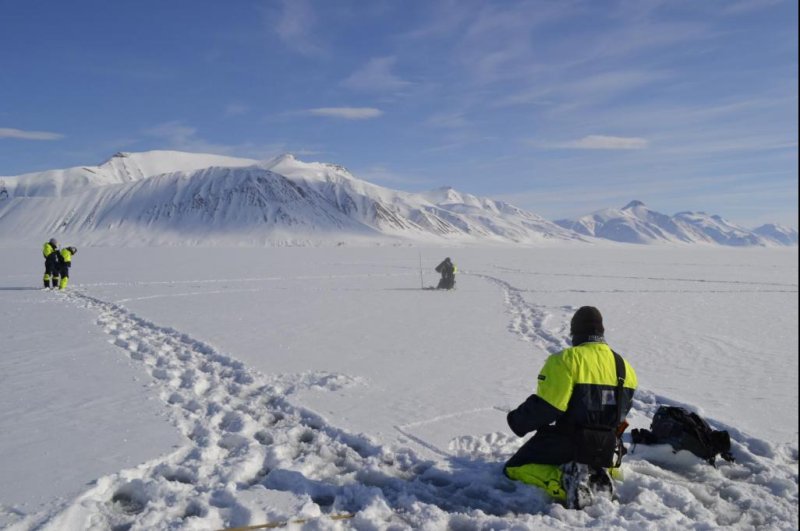Researchers measured the affects of coal mine dust on the reflectivity of snow samples collected on an island north of the Arctic Circle. Photo by Alia Khan/University of Colorado
Feb. 1 (UPI) -- According to a new study, dust expelled by a coal mine in Svalbard, Norway, encourages snow and ice melt in the Arctic. The spectral reflectance of nearby snow was reduced 84 percent by the presence of dust.
Researchers measured the albedo, the reflecting power of a surface, of snow samples collected at four sites on the Arctic island. Each sample site was a different distance from the mine.
In calculating the diffuse reflectivity of each snow sample, scientists accounted for other factors, like snow grain size. Their findings -- detailed in the Journal of Geophysical Research: Atmospheres -- showed a significant reduction in the albedo of snow samples within the immediate vicinity of the coal mine.
Darker snow and ice absorbs more solar energy, retains heat and melts faster.
Researchers suggest their numbers can be used to predict the effects of dust and soot on snow with satellite images and computer models.
"The extreme contrast between snow and dust at this particular site gave us a baseline to develop algorithms that we can now use to take future measurements in areas that aren't easily accessible," Alia Khan, a post-doctoral researcher at the University of Colorado, Boulder, said in a news release.
Future measurements could be used to calculate the environmental risks of energy production ventures in the Arctic.
"We hope these ground-based spectral measurements could be used in the management of future energy development in the Arctic, especially for mines that may be unavailable for ground-based observations, but may be large enough to be visible by satellite," said Khan.















